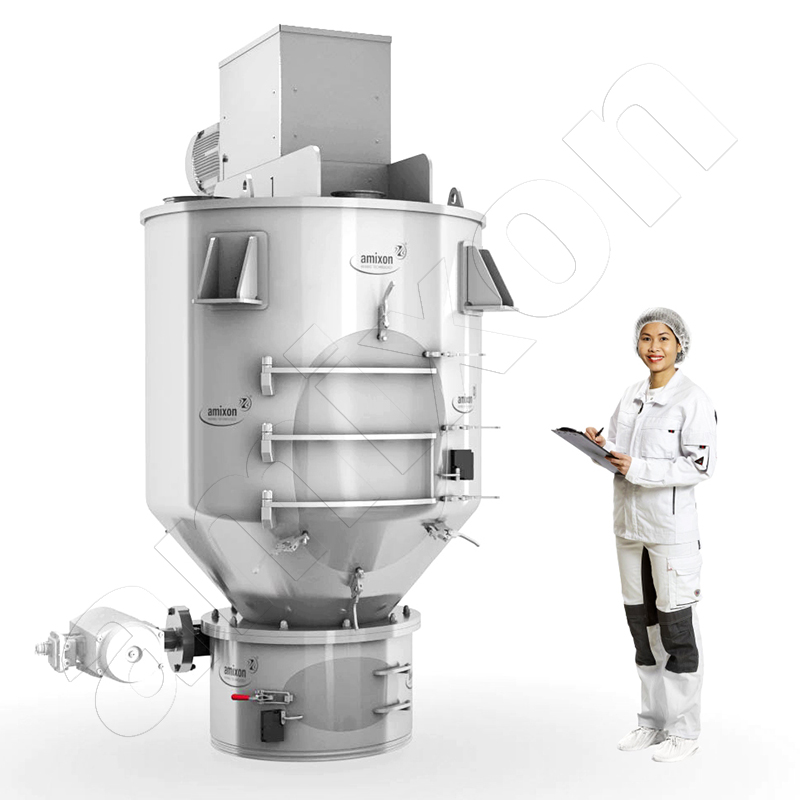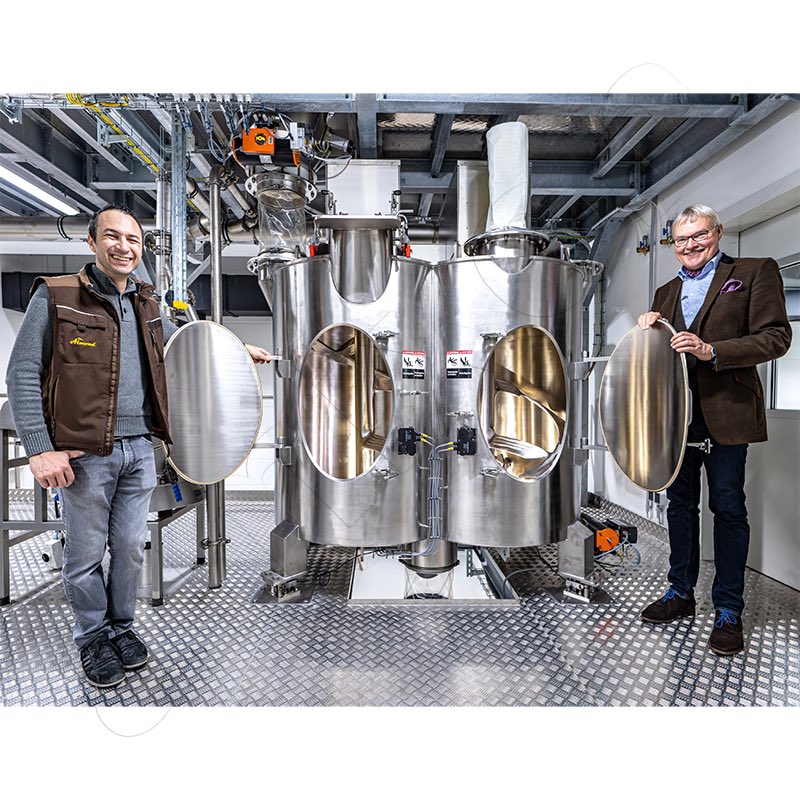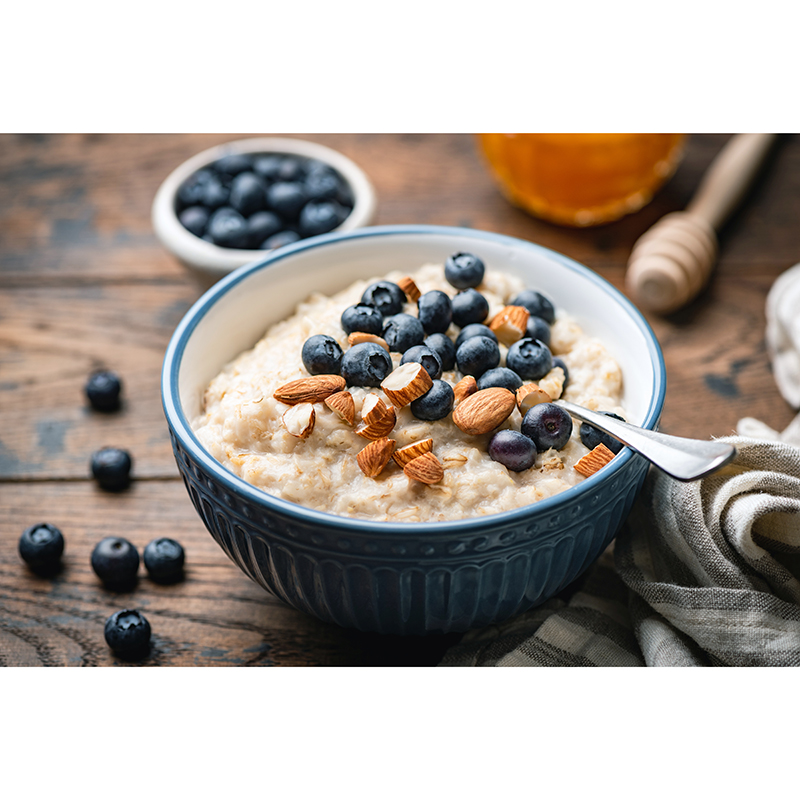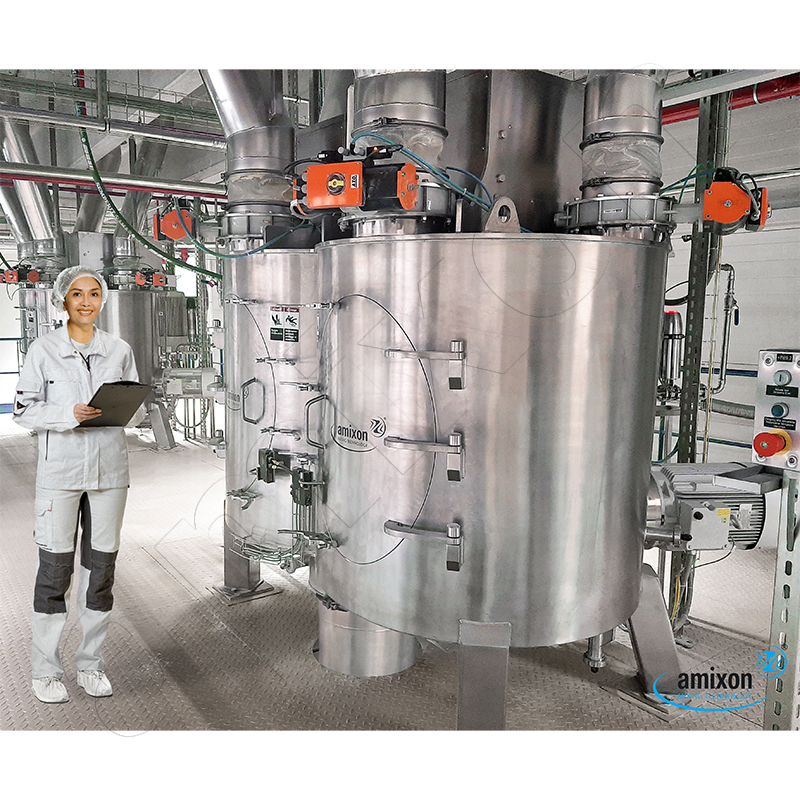
Dietetics and health food store products
Healthy nutrients with almost no carbohydrates and gluten
The term dietetics is derived from the Ancient Greek words διαιτητική, meaning "doctrine of the way of life", and δίαιτα, meaning "way of life, livelihood". Dietetics encompasses all aspects of a regulated lifestyle. Thus it defines itself as an applied nutritional theory for physical and mental health maintenance or recovery. It is one of the three basic branches of medicine, along with surgery and pharmacology.
Complete discharge and flexibility are competitive advantages
Depending on taste preferences and nutritional goals, there are countless dietary product groups that are packaged as powders after mixing in cans, sachets, bags or blisters. The less residual mixture remains in the production plant, the more flexibly and economically it can operate. In this respect, great attention must be paid to complete emptying. Any residue that remains must be removed either dry or wet. amixon® has excellent solutions and would be happy to demonstrate these important additional operations in the technical centre.
Summary of the typical quality features of amixon® mixers
- Highest mixing quality - even at mixing ratios of 1:1,000,000,
- optimal protection of sensitive components
- Minimal energy input, protects fragile particles & encapsulated micronutrients
- Hygienic design - FDA-, GMP- & EHEDG-compliant construction, no dead space
- Fast discharge – up to 99.99% discharge without residue, reducing product loss
- Flexible batch sizes – scalable mixing technology, even for small batch sizes
- Short mixing times – efficient mixing in just a few seconds
- Easy to clean – dry and wet cleaning, cleaning in place/sterilisation in place capable for maximum product safety
- Wide range of applications – particularly in the development of food supplements.
The origin of dietetics
The origin of dietetics is thought to be in Asia. As early as 3000 years ago, ancient Indian medicine diagnosed connections between nutrition and associated intolerances. At around the same time, traditional Chinese dietetics postulated the health-promoting effect of a balanced nutrient composition.
In Europe, the foundations of dietetics were developed by Hippocrates in the 4th century BC. In the Hippocratic tradition, dietetics is characterised as a holistic concept of salutogenesis: regulated life, physical activity, healthy nutrition.
In the Roman imperial period, Galen takes up these basic ideas. From them, he develops the basis of the ‘six unnatural things’ (‘sex res non naturales’):
- light and air (lux et aer)
- food and drink (cibus et potus)
- movement and rest (motus et quies or exercitium)
- sleep and waking (somnus et vigilia)
- secretions and excretions (secreta et excreta)
- excitement of the feelings (affectus animi or accidentia animae).
The importance of dietetics has changed
The basic ideas of Galen1 were continued in the Middle Ages under religious influence. On this basis, general interest in dietary nutrition according to the lunar calendar grew. Health books and cookbooks also enjoyed increasing popularity.
In the Renaissance, healthy nutrition received a new impetus through the Enlightenment.
The assumption that the various areas of human life are interconnected was increasingly replaced by differentiating and analysing perspectives. Questions of nutrition became more and more important. Various new nutritional teachings received more and more attention during this time. Macrobiotics was one of them. In 1796, Christoph Wilhelm Hufeland wrote the work ‘Macrobiotics or the Art of Prolonging Human Life’.
Today, dietetics also involves providing advice and care to health-conscious individuals on a case-by-case basis, using specially prepared food. The guiding principle is: healing and promoting health to increase well-being and quality of life. Dietetics is the key approach for the therapy or prophylaxis of nutrition-related illnesses.
1 Galen was a Greek physician who lived in the 2nd century AD.
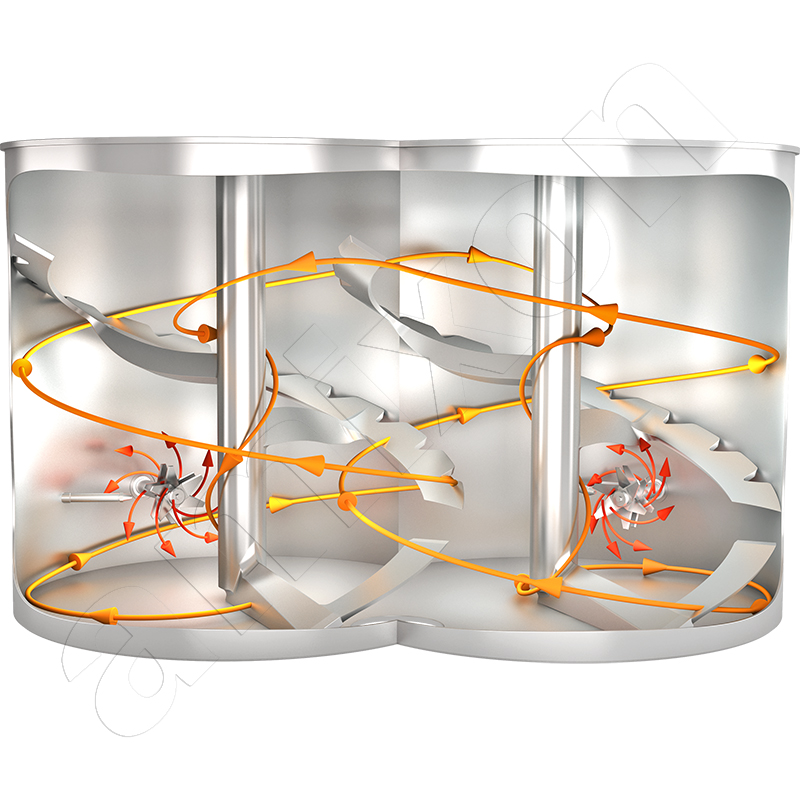
Interior view of an amixon® twin-shaft mixer. In addition to the main mixing tools (spiral mixer), this mixer is also equipped with high-speed rotating whirlers. These are only started when necessary, for example when highly viscous liquids such as honey or oleoresins are to be distributed in the powder.
Alternatives to traditional foods are often available in powder form
Many diseases, especially in the area of the gastrointestinal tract, are due to food intolerances, intolerances to certain ingredients or allergies. Gluten, a protein found in many cereals, is in many cases responsible for the clinical picture of coeliac disease with abdominal pain, diarrhoea and flatulence. So it is obvious that consumers are looking for alternatives to conventional, traditional foods that do not contain certain ingredients. Another important aspect is weight loss, which is to be supported, for example, by a low-carbohydrate diet. Gluten-free and low-carbohydrate products are therefore in great demand, especially when they are easy to manufacture.
Many of these products are therefore available in powder form, and more than a few even as powder mixtures. Even more often, however, a powdery mixture is a component of many dry, moist and liquid diet nutrients. The powder processing is therefore of particular importance. For example, it is mixtures of spices, flavourings, natural colours and dietary fibres that ensure a balanced taste and good digestibility. Vital trace elements such as iron, calcium, zinc, iodine, copper, selenium, chromium, fluorine, potassium, sodium, magnesium and phosphorus must be prepared as a premix - finely distributed and deagglomerated. This also applies to encapsulated vitamins, probiotics and prebiotics. For this purpose, amixon GmbH, based in Paderborn, manufactures seven different vertical precision mixing systems with the greatest vertical range of manufacture. amixon GmbH is thus the undisputed system and quality leader in this important segment.
Diseases of wealth
Overweight is often the main cause of many lifestyle diseases. There is no way around reduction diets to reduce body weight. The diet is changed to a calorie-reduced mixed diet and a new eating behaviour is trained. The Atkins diet, the fat diet according to Dr Felix, the blood group diet or the Max Planck diet, for example, are based on scientific aspects. Many diseases of the gastrointestinal tract can be treated by nutrition. The effects of gastritis, coeliac disease, lactose intolerance, constipation or Crohn's disease are reduced by dietetics. A normal whole food diet is followed, avoiding foods that cause discomfort. In addition, the gastrointestinal tract is supported by clean eating and ketogenic nutrition. With a ketogenic diet, the energy metabolism in the body is consciously changed by eating a low-carbohydrate but high-fat diet.
Diseases of the liver, such as fatty liver or cirrhosis of the liver, can have many causes. Low-fat natural food that is rich in vitamins is recommended here.
Sometimes diseases of the biliary tract (gallstones, etc.), pancreas (chronic and acute pancreatitis, etc.), bones (osteoporosis) or metabolic diseases (diabetes mellitus, cystic fibrosis, lipid metabolism disorder, etc.) are due to malnutrition.
In order to prevent them through dietetics, a variety of nutritional theories have been developed. Many of them are still applied to day for a wide range of symptoms: whole food nutrition, vegetarianism, veganism, raw food, macrobiotics, food combining, the nutritional theory of traditional Chinese medicine (TCM), nutrition according to the five elements, the nutritional theory according to Ayurveda, the nutritional theory of anthroposophy.
Undernourishment or malnutrition can also have physiological causes. Hasty eating can be responsible for suppressing the feeling of being full or hungry.
The media around us should stimulate our needs: Alcohol should make us relax, chocolate should create a feeling of happiness, ice cream should reward us. Emotional drinking and eating should satisfy us as a substitute. However, the prerequisite for a sustainably disciplined diet is a holistic therapy approach in order to balance as many aspects of the daily routine as possible.
© Copyright by amixon GmbH

